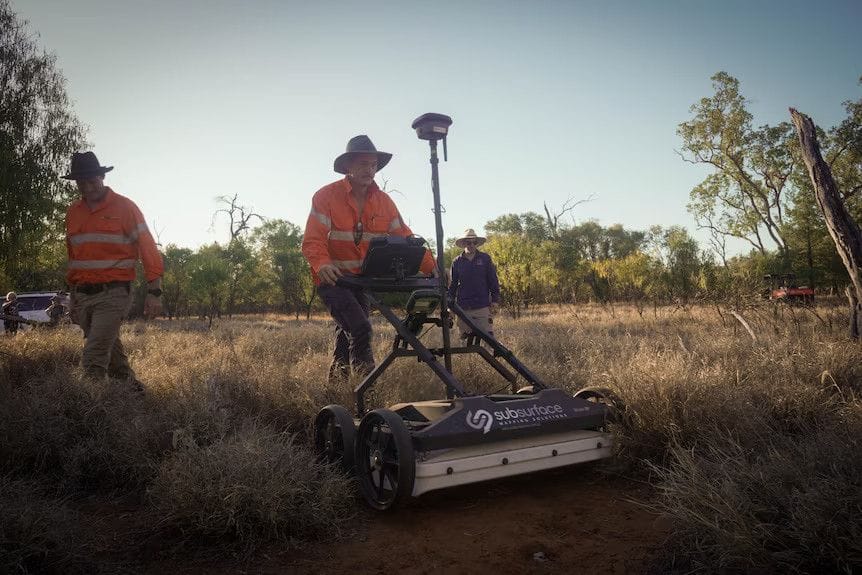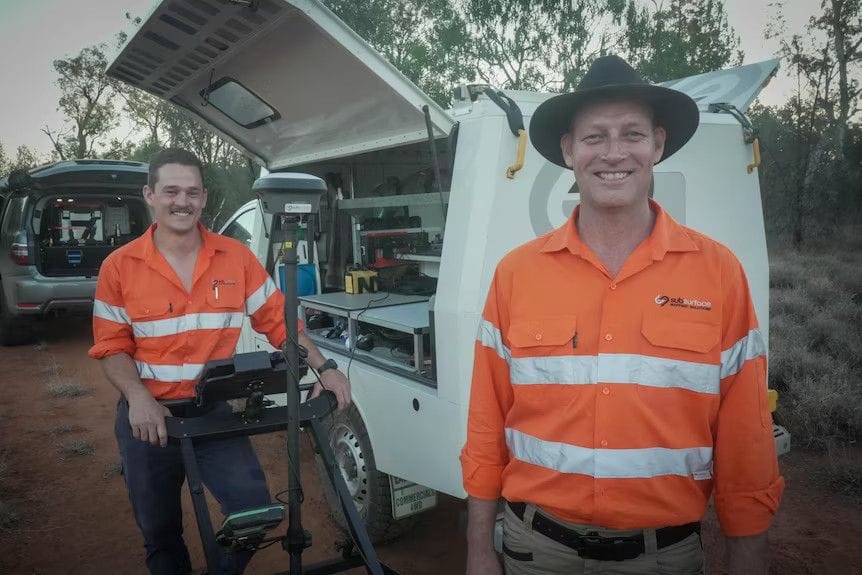Endangered Northern Hairy-Nosed Wombat Burrows mapped by Ground-Penetrating RadarWritten on the 4 September 2023 )
The northern hairy-nosed wombat is not only Australia's but the world's largest burrowing herbivore, out-sizing the other two wombat species found in Australia. These gentle giants can weigh up to 35 kilograms and stretch over a meter in length. Andy Howe, a field ecologist with the Australian Wildlife Conservancy (AWC), underlines the importance of their conservation. However, having the entire population in one place is risky: a single drought or severe fire could spell disaster. Hence the need to distribute these wombats across their original range to ensure their long-term survival. Mapping Wombat Burrows A ground breaking study, a collaborative effort involving AWC, the Wombat Foundation, and Subsurface Mapping Solutions, is now underway at the St. George site to map the intricate network of wombat burrows. For Subsurface Mapping Solutions, a company that typically specialises in mapping underground utilities and services like phone lines, power cables, and water systems, this venture represents a new frontier, trading the streets of Brisbane and the Gold Coast for the bush. Andrew Watson, Managing Director of Subsurface Mapping Solutions, explains their approach: "We're employing a multi-array, ground-penetrating radar system that shoots radio waves into the ground and records the signals as they bounce back. This is how we locate our targets." The results of this study promise to provide valuable insights into the structure of the wombat burrows. Leanne Brosnan, from the Wombat Foundation emphasises its significance, stating, "It's crucial for identifying potential new habitats for the northern hairy-nosed wombats, helping us understand more about their burrowing requirements." One of the most intriguing findings has been the wombats' adaptation to the distinct soil structures at St. George compared to Epping Forest. Andy Howe points out, "Here at St. George, we assume that the burrows have a different structure and depth. Understanding the depth of these burrows will guide our search for potential future habitats." Max's equipment, which looks a little like a lawnmower, emits radio waves deep into the soil to map wombat burrows. Their ground-penetrating radar system shoots radio waves into the ground and records the signals as they bounce back, offering valuable insight into the structure of wombat burrows. These findings are crucial in identifying potential new habitats, as Andy Howe explains. Conservation efforts for this unique wombat species are gaining momentum. Recently, the Department of Environment and Science secured a third site at Powrunna State Forest, near St. George, planning to relocate a wombat population within the next few years. They aim to establish a fourth site by 2041. With these measures, Leanne Brosnan looks forward to a future where the remarkable northern hairy-nosed wombats flourish in the wild once again.
|

 one of the world's most endangered species, the northern hairy-nosed wombat. Once these marsupials roamed from central Victoria to central Queensland but due to land clearing and invasive pests, their population plummeted to just 35 by the 1980s. A major conservation effort has since seen their numbers increase to over 300, spread over two protected reserves in rural Queensland.
one of the world's most endangered species, the northern hairy-nosed wombat. Once these marsupials roamed from central Victoria to central Queensland but due to land clearing and invasive pests, their population plummeted to just 35 by the 1980s. A major conservation effort has since seen their numbers increase to over 300, spread over two protected reserves in rural Queensland.
